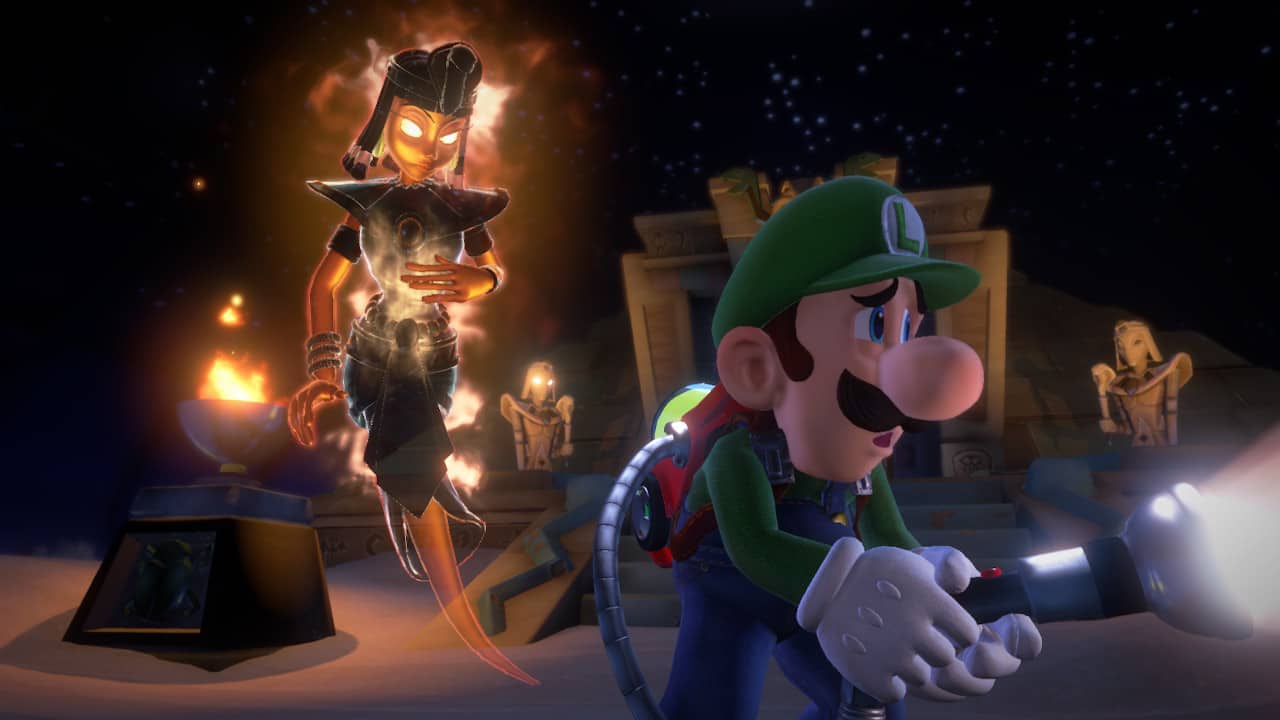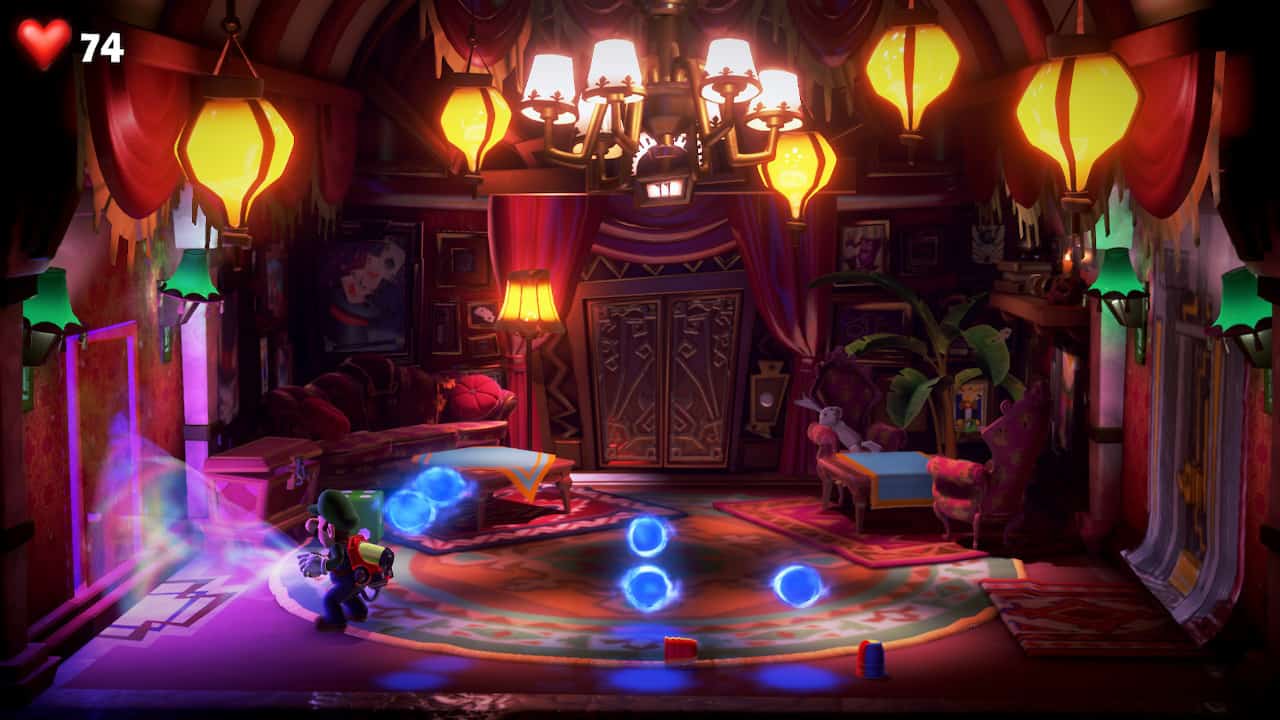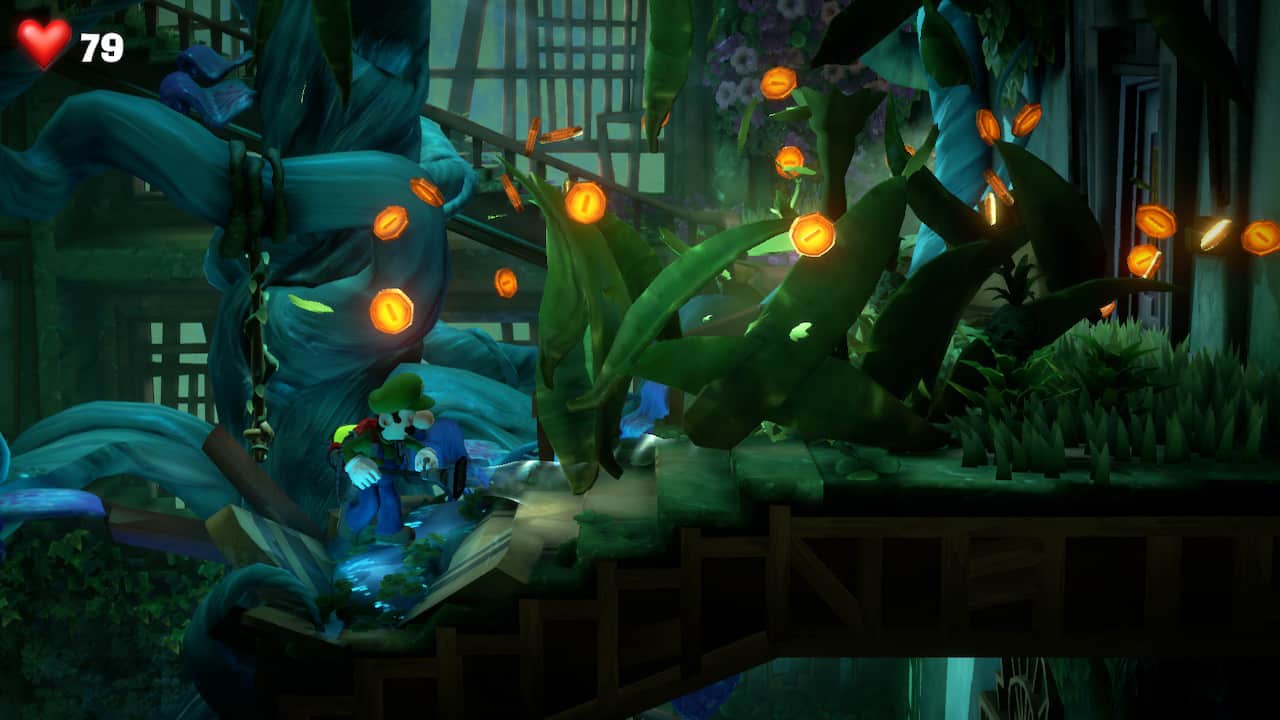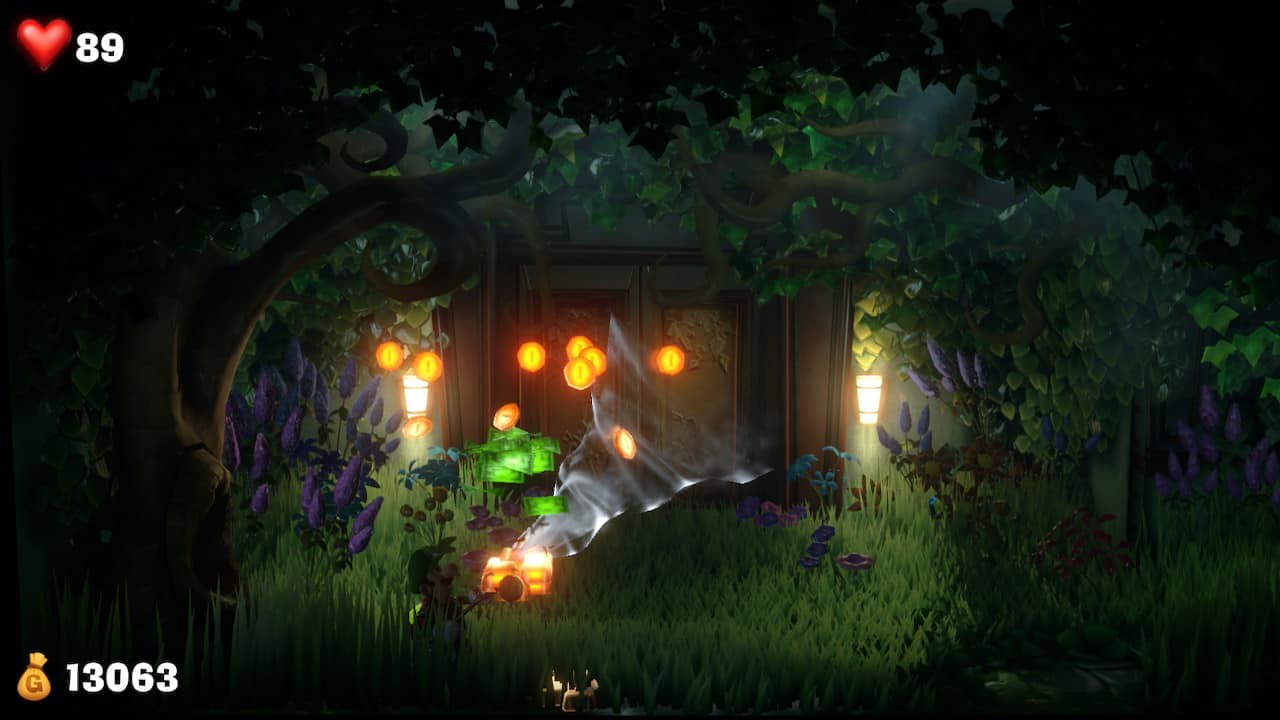Platform:
Released:
October 31, 2019
Publisher:
Nintendo
Developer:
Next Level Games
As a fan of the green younger Mario brother, I had a lot riding on Luigi’s Mansion 3. The original Luigi’s Mansion for the Gamecube is a very important game to me, and though that might seem weird, I’m not alone. It’s a beloved classic to its diehard fans, and among a sea of Mario games, it represented something different. Its 2013 sequel, Luigi’s Mansion 2: Dark Moon, improved upon the game in its technical aspects: the controls were smoother, the environments more animated and detailed. And although it reviewed well, it personally left me wanting.
I started Luigi’s Mansion 3 with trepidation: would it be like Dark Moon, with great graphics but formulaic gameplay and dull as dishwater ghosts? Or like the original, with all the glory my nostalgia goggles provide? It’s the best possible answer: Luigi’s Mansion 3 strikes the perfect balance in between, making for one of the most charming experiences of 2019.
Luigi’s mansion 3 is very similar in concept to the first game, only on a bigger scale. The mansion is now a hotel, and and joining the missing Mario is Princess Peach, and a few toads. The hotel is infested with ghosts and hidden items, with stronger boss ghosts lurking in each area. At the same time, all of the good additions of Dark Moon return as well: detailed and varied environments with secrets everywhere, and animations overflowing with energy.
Every floor of the hotel acts as a different level, each with a different theme. Some are themes that you might actually see in a hotel: a row of suites or a fitness center. Others, like the ancient Egyptian floor, are just an excuse for cool level design. It keeps things interesting, making it impossible to know what’s waiting on the floor above. By my count, there wasn’t a single level I disliked, bar for one. And that one is only because basement levels are never good, fact.

Luigi doesn’t so much suck up ghosts as he does obliterate them by smashing them into the ground repeatedly. It’s not exactly in the spirit of the original, but it sure adds a kick to clearing a room of ghosts. They’re a lively bunch, popping up in unexpected places and using random items around them to shield themselves from Luigi’s flashlight. There are more than 5 types of ghosts, not counting special types, and beating them up never stops feeling satisfying.
Dark Moon frustrated me with its lack of interesting boss ghosts, but this has been fixed with gusto. Each floor’s boss ghost is crazier than the next, and I was pleseantly surprised with the creativity that went into the boss fights.

Making a return from the Luigi’s Mansion remake on 3DS is Gooigi, the most hilarious and unsettling idea Nintendo has ever come up with. Gooigi is a clone of Luigi made out of green slime, created by Professor E. Gadd. He was introduced in the 3DS remake of Luigi’s Mansion, so that 2 players could go through the game in co-op mode. The 3DS’s awful wireless capability aside, playing co-op added barely any enjoyment because the original game wasn’t designed with it in mind.
But now, Gooigi is an intrinsic part of the game. You’ll need him to slip through bars, cracks and drains, and there are plenty of puzzles that require a second Luigi to solve. That doesn’t mean you have to play co-op though – if you’re going solo, you can swap control to Gooigi anytime you want. The puzzles are cleverly designed so that you’re never at a disadvantage for playing by yourself over co-op.
The hotel is chock full of puzzles, hiding what can only be discribed as a stupid amount of money. You’ll make it rain coins, bills, gold bars, and pearls with every secret you find. I was surprised with the level of enginuity and creativity that went into some of them: and although many of them are the same type of puzzle repeated in different areas, they never feel tired. The hiding spots for the hidden Gems on each floor are particularly inspired.
Gooigi will come in handy for this purpose unique ability to slip through drains and bars will be needed to make the most of your treasure hunting. Don’t forget him while fighting ghosts and bosses either – there are some creative ways to use Gooigi.

“It’s a long time since I’ve felt so rewarded for checking every nook and cranny. And with a friend, it’s even better.”
Exploring is an absolute joy. There are puzzles in places I never expected, with satisfying solutions that actually use each floor’s environment and items in really entertaining ways.
It’s a long time since I’ve felt so rewarded for checking every nook and cranny. And with a friend, it’s even better. There’s not a single room that doesn’t contain some secret puzzle or hiding place, and many of them require attention to detail. They aren’t hard, they just take a keen eye to spot, and a firm grasp on the poltergust’s abilities.
There is only one thing that stops the game from reaching masterpiece status for me, and that’s the control scheme and lack of options. Luigi has a lot of abilities in his arsenal: the vacuum of course, which are mapped to both triggers, but also the strobe light and the dark light, which reveals hidden objects. And brand new for Luigi’s Mansion 3 is the suction shot: a plunger on a rope, which allows Luigi’s to interact with hard-to-reach objects. Several of these abilities are mapped to the same buttons, making for a lot of mis-presses. Most annoying of these is switching control to Gooigi, which is done by pressing R3, the right control stick. The amount of times I have lost track of a ghost because I accidentally pressed on the analogue stick too hard was frustrating to say the least.
With no option to configure the controls to my preference, I had no choice but to deal with this control scheme. The issues weren’t constant, but enough to be an annoyance even by the end of the game.
A fair bit of the promotions for this games focused on the multiplayer options, and the main story mode’s co-op is admittedly a fantastic addition. But the actual multiplayer Mode failed to impress my too much. ScareScraper Mode returns from Dark Moon, where you and your friends can ransack through multiple floors as fast as the time limit allows. And a brand new addition is the ScreamPark, where up to 8 players can compete as two teams in a series of 3 minigames.
ScareScraper is mostly unchanged from before, but includes the suction shot and Gooigi mechanics. The floors are different each time you play, but the repeated rooms and objectives wear thin quick. Likewise, The ScreamPark minigames are unlikely to keep your interest for long. Each one takes advantage of Luigi’s various Poltergust moves, but there’s not much to them. If you like this style of game, you’re better off playing Super Mario Party, another great game for the Switch. I was only able to experience them with 2 players, so perhaps it’s better experienced with 4+. But considering how fun the main story is, why would you bother?
Positive:
- Satisfying exploration and treasure hunting
- Levels and bosses are fantastic
- Brimming with personality
- Co-op adds to the fun
Negative:
- Poltergust G-00 controls
- Multiplayer modes not very interesting
I was afraid I would have to be mindful of my nostalgia goggles for this game. But I didn’t have to be; Luigi’s Mansion 3 is the perfect mix of its previous iterations. The story can be completed in about 10 hours, but I look forward to spending twice as long looking for those last hidden Gems. Whether it’s as nostalgic to you as it is to me, you should consider this charming game for your Switch library.














